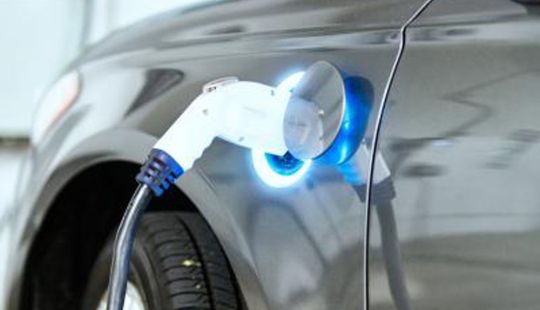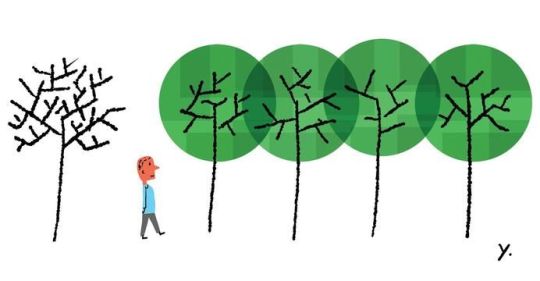#friday bonanza result today
Text
Friday Bonanza Lotto 2Sure Keys For Today
Friday Bonanza Lotto 2Sure Keys For Today
Friday bonanza lotto 2sure keys -Bonanza lotto banker live today – friday bonanza banker for today will drop play as we tell you at Abc Naija Lotto.
Lotto banker for today is not just one number but a set of numbers with high possibility of falling out during today’s Ghana lotto draw.
Friday bonanza lotto banker live draw – Bonanza live banker: Friday…

View On WordPress
#2 live banker for today lotto#4cast bonanza#Bonanza Live banker#Bonanza live banker for today#Bonanza lotto banker#Bonanza lotto live banker#Bonanza lotto live banker today#Bonanza lotto live banker today on facebook#Bonanza lotto live bk#Bonanza lotto prediction for today#CLICK To WIN Bonanza LOTTO 2sure#friday bonanza banker for today#friday bonanza banker results#Friday bonanza lotto 2sure keys#friday bonanza lotto banker live draw#friday bonanza lotto banker live results#friday bonanza lotto banker live today#friday bonanza lotto keys#king live banker for today#lotto banker for tomorrow morning#morning dew live banker for today#peoples live banker#premier bonanza banker#sure banker for today#today Bonanza live banker#WIN Bonanza LOTTO 2sure
0 notes
Text
Wednesday Lotto Results
"At Afriluck, we provide the latest and most accurate lottery results for a variety of lotteries, including Monday Lotto, Wednesday Lotto, Ghana Lotto, Friday Bonanza Lotto, Lucky Lotto, Midweek Lotto, and National Lottery. Whether you're checking yesterday's results or today's, you can find them all on our website. Simply visit https://www.afriluck.com/results
0 notes
Text
High Demand For Electric Vehicles Is Draining California's Rebate Program
New Post has been published on https://coolcarsnews.com/high-demand-for-electric-vehicles-is-draining-californias-rebate-program/
High Demand For Electric Vehicles Is Draining California's Rebate Program

The program that will sparked California's zero-emissions purchasing bonanza is reportedly operating on fumes. That's the evaluation from the Ca Air Resources Board (CARB), which introduced Friday that its Clean Automobile Rebate Project will be from cash within a month, as a result of spike in electric automobile users taking advantage of the program because the middle of 2020. Based on CarsDirect , a similar situation took place during the summer of 2019—after EV sales spiked through 3. 3 percent in order to 5. 6 percent of most cars sold in the state — although more financing was available by the drop. So far, CARB hasn't uncovered when its rebate coffers will be replenished.

EVs now be aware of almost eight percent associated with car sales, thanks to the jump in sales in the center of 2020. Roughly two-thirds of EV owners signed up for the discount program to the point where this particular year's pile of apps have exceeded levels documented this time of year in 2020.
ASSOCIATED: What Biden's Facilities Bill Means For American EVs, School Buses, Roads Plus Bridges
The benefits to getting the rebate are worthy of a credit card applicatoin and aren't strictly restricted to EVs, which can offer bonuses like $2, 000 upon cars like the Chevy Bolt. Owners of hybrids such as the Toyota RAV4 Prime qualify to receive $1, 000, whilst owners of hydrogen gas cell vehicles like the Toyota Mirai can get up to $4, 500.

"The demand for EVs, particularly by lower-income customers, continues to grow, clearly demonstrating there is a broad range of models of EVs available today to meet all customer needs, ” said CARB Executive Officer Richard W. Corey.
CARB provides since established a waiting around list to address applications after the program gets more financing. In the meantime, EV consumers nevertheless can get access to other applications like the California Clean Gas Reward, which offers upfront financial savings of up to $1, 500. Extra opportunities worth pursuing consist of the Clean Air Vehicle Decal, and a number of local government plus community funding endeavors.

California offers led the charge meant for green technology for years, pressing such goals as zero emissions for shipping trucks and vans simply by 2024 and appealing automakers to embrace the particular state's gasoline efficiency initiatives in 2019 when the government dropped national clean-air criteria. California is also one of twelve states pressuring the White House in order to ban gas-powered vehicles simply by 2035 .
Sources: Ca Air Resources Board , CarsDirect
NEXT: President Biden Tours EV Plant Within Push To Overtake China's Foothold On Market
0 notes
Link
The world is waking up to the climate crisis. Just look at Wall Street Angel Gurría, the head of the OECD, told CNN Business that the summit, which continues on Friday, is a huge step in fighting the climate crisis. “It’s completely turning the expectations around, and now with the United States leading the charge rather than holding everything back, this is the big game changer,” he told Julia Chatterley on her show “First Move.” But will the United States stay committed to the goal, especially after four years of climate denial from the previous occupant of the White House? According to John Kerry, the US Special Presidential Envoy for Climate, you don’t have to take the administration’s word for it. Instead, look at the actions of companies and investors. “There’s a company called Tesla, which is the highest-valued automobile company in the world. Why? All it makes is one product: electric vehicles. That is what is happening. That’s a signal. That’s the market saying, ‘Here we are. This is going to happen,’ ” Kerry told reporters on Thursday. He’s not wrong. Wall Street and Corporate America are waking up to the climate crisis, and many companies are putting money to work to address the crisis. But there are still huge challenges, and more investment needed. The numbers: A record $501 billion was pumped into the energy transition in 2020, according to BloombergNEF. The WilderHill New Energy Global Innovation Index, which tracks shares in 125 global companies that aim to address climate change, hit an all-time high earlier this year. The flood of money comes as clients push fund managers to create portfolios built around sustainable businesses. Assets in sustainable funds hit a record high of $1.65 trillion at the end of last year, up 29% from the previous quarter, according to Morningstar. Collateral damage: The magnitude of money now looking for a home is also feeding concerns that some will inevitably flow to unworthy companies, reports Julia Horowitz, your usual Before the Bell correspondent. And memories of a previous boom-bust cycle in green investing linger. But can climate progress be reversed? Kerry doesn’t think so. “These companies have made this critical, long-term, strategic marketing judgment — and that is the way the market is moving — no politician, no matter how demagogic or how potent and capable they are, is going to be able to change what that market is doing, because it will have moved. It’ll have four years of entrenchment. And those jobs will be there,” he said. India is churning out billion-dollar startups India’s startup community is experiencing an unprecedented funding bonanza, my CNN Business colleague Diksha Madhok reports from New Delhi. But can the companies make any money? In the first four months of 2021, 11 Indian companies have attained unicorn status, meaning they’ve reached a valuation of at least $1 billion, according to data platform Tracxn. Five startups hit that milestone in April alone. By comparison, there were 13 in all of 2020, and 10 in 2019. The play: The boom is in large part thanks to investment by firms such as Tiger Global and SoftBank, which are pumping money into India’s fast growing internet businesses — a prize many investors simply find too big to ignore. Not only are more companies amassing this kind of money than ever, but they’re also doing so at a record-breaking clip. But the seemingly endless fundraising cycles may eventually produce diminishing returns, worry many industry experts, who say India’s startups need to start showing consistent profits and healthy exits for investors, and soon. “It is great that Indian startups are going through this funding boom. But they will need to find sustainable business models, which make a lot of money, in order to survive,” said Radhika Gupta, CEO of Edelweiss Asset Management Limited. Reasons to worry: Flipkart — now controlled by Walmart (WMT) — is the only Indian tech unicorn to have been acquired at a valuation of more than $1 billion. And no tech startup worth more than $1 billion has gone public. “By inflating valuations in the private market, you are postponing your ability to go into the public market,” said Karthik Reddy, co-founder of venture capital firm Blume Ventures. “We don’t have large tech acquirers, so you can’t wait for a Walmart to come and buy your biggest asset every time,” he added. A guide to the Wild Wild West Bitcoin and its many peers have surged to new levels of popularity over the past year, but they’re still a mystery to many investors. With new “coins” cropping up all the time, it’s hard to keep track of what’s worth paying attention to and what might not be here to stay. Ranked by their market value in US dollars, the biggest cryptocurrencies in the world are bitcoin, Ethereum, Binance Coin, XRP and Tether, according to CoinMarketCap. Their market values range from more than $1 trillion to around $50 billion. But that doesn’t tell us anything about how they work and how valuable the single coins might be in a broader context. Bookmark this: From my CNN Business colleague Anneken Tappe, here’s your guide to the biggest digital currencies. Up next Honeywell (HON), American Express (AXP) and Schlumberger (SLB) report earnings before the opening bell. Also today: US data on new home sales will be released at 10 a.m. ET. Coming next week: Earnings season continues with results from Tesla (TSLA), BP (BP), Google (GOOGL) owner Alphabet, Microsoft (MSFT) and many others. Source link Orbem News #Climate #crisis #investing #Premarketstocks:Theworldiswakinguptotheclimatecrisis.JustlookatWallStreet-CNN #Street #Waking #Wall #World
0 notes
Text
The world is waking up to the climate crisis. Just look at Wall Street
New Post has been published on https://appradab.com/the-world-is-waking-up-to-the-climate-crisis-just-look-at-wall-street/
The world is waking up to the climate crisis. Just look at Wall Street
Angel Gurría, the head of the OECD, told Appradab Business that the summit, which continues on Friday, is a huge step in fighting the climate crisis.
“It’s completely turning the expectations around, and now with the United States leading the charge rather than holding everything back, this is the big game changer,” he told Julia Chatterley on her show “First Move.”
But will the United States stay committed to the goal, especially after four years of climate denial from the previous occupant of the White House?
According to John Kerry, the US Special Presidential Envoy for Climate, you don’t have to take the administration’s word for it. Instead, look at the actions of companies and investors.
“There’s a company called Tesla, which is the highest-valued automobile company in the world. Why? All it makes is one product: electric vehicles. That is what is happening. That’s a signal. That’s the market saying, ‘Here we are. This is going to happen,’ ” Kerry told reporters on Thursday.
He’s not wrong. Wall Street and Corporate America are waking up to the climate crisis, and many companies are putting money to work to address the crisis. But there are still huge challenges, and more investment needed.
The numbers: A record $501 billion was pumped into the energy transition in 2020, according to BloombergNEF. The WilderHill New Energy Global Innovation Index, which tracks shares in 125 global companies that aim to address climate change, hit an all-time high earlier this year.
The flood of money comes as clients push fund managers to create portfolios built around sustainable businesses. Assets in sustainable funds hit a record high of $1.65 trillion at the end of last year, up 29% from the previous quarter, according to Morningstar.
Collateral damage: The magnitude of money now looking for a home is also feeding concerns that some will inevitably flow to unworthy companies, reports Julia Horowitz, your usual Before the Bell correspondent.
And memories of a previous boom-bust cycle in green investing linger. But can climate progress be reversed? Kerry doesn’t think so.
“These companies have made this critical, long-term, strategic marketing judgment — and that is the way the market is moving — no politician, no matter how demagogic or how potent and capable they are, is going to be able to change what that market is doing, because it will have moved. It’ll have four years of entrenchment. And those jobs will be there,” he said.
India is churning out billion-dollar startups
India’s startup community is experiencing an unprecedented funding bonanza, my Appradab Business colleague Diksha Madhok reports from New Delhi. But can the companies make any money?
In the first four months of 2021, 11 Indian companies have attained unicorn status, meaning they’ve reached a valuation of at least $1 billion, according to data platform Tracxn. Five startups hit that milestone in April alone. By comparison, there were 13 in all of 2020, and 10 in 2019.
The play: The boom is in large part thanks to investment by firms such as Tiger Global and SoftBank, which are pumping money into India’s fast growing internet businesses — a prize many investors simply find too big to ignore. Not only are more companies amassing this kind of money than ever, but they’re also doing so at a record-breaking clip.
But the seemingly endless fundraising cycles may eventually produce diminishing returns, worry many industry experts, who say India’s startups need to start showing consistent profits and healthy exits for investors, and soon.
“It is great that Indian startups are going through this funding boom. But they will need to find sustainable business models, which make a lot of money, in order to survive,” said Radhika Gupta, CEO of Edelweiss Asset Management Limited.
Reasons to worry: Flipkart — now controlled by Walmart (WMT) — is the only Indian tech unicorn to have been acquired at a valuation of more than $1 billion. And no tech startup worth more than $1 billion has gone public.
“By inflating valuations in the private market, you are postponing your ability to go into the public market,” said Karthik Reddy, co-founder of venture capital firm Blume Ventures.
“We don’t have large tech acquirers, so you can’t wait for a Walmart to come and buy your biggest asset every time,” he added.
A guide to the Wild Wild West
Bitcoin and its many peers have surged to new levels of popularity over the past year, but they’re still a mystery to many investors.
With new “coins” cropping up all the time, it’s hard to keep track of what’s worth paying attention to and what might not be here to stay.
Ranked by their market value in US dollars, the biggest cryptocurrencies in the world are bitcoin, Ethereum, Binance Coin, XRP and Tether, according to CoinMarketCap.
Their market values range from more than $1 trillion to around $50 billion. But that doesn’t tell us anything about how they work and how valuable the single coins might be in a broader context.
Bookmark this: From my Appradab Business colleague Anneken Tappe, here’s your guide to the biggest digital currencies.
Up next
Honeywell (HON), American Express (AXP) and Schlumberger (SLB) report earnings before the opening bell.
Also today:
US data on new home sales will be released at 10 a.m. ET.
Coming next week: Earnings season continues with results from Tesla (TSLA), BP (BP), Google (GOOGL) owner Alphabet, Microsoft (MSFT) and many others.
0 notes
Text
How Ghanaians have decided to stake lottery with the numbers associating J.J Rawlings death
How Ghanaians have decided to stake lottery with the numbers associating J.J Rawlings death
In an image trending on social media, several netizens are busily trying their luck on some numbers today which have a connection with the demise of the former first gentleman.
Many gamblers are busily betting their monies that the date of birth or the death date of Papa J will likely appear in the results of either Thursday Fortune, Friday Bonanza, or National on Saturday. So far, we have some…

View On WordPress
0 notes
Text
Live Friday Bonanza Today 07/10/2022
Live Friday Bonanza Today 07/10/2022
Live Friday Bonanza Today 07/10/2022
Live friday bonanza today – Unfailing banker for tomorrow friday bonanza, friday bonanza unfailing banker with no restrictions, friday bonanza two sure.
Banker for bonanza draw – Check Ghana Friday Bonanza Lotto forecast for 03 Dec 2021, We got the best two sure, 3direct, perm4, perm5 with live banker.
Bonanza hot banker live for today is real and nothing will…
View On WordPress
#baba ijebu Bonanza banker for today#banker for tomorrow#bonanza 2 live banker for today lotto#Bonanza friday hot and cold numbers#Bonanza friday lotto keys#Bonanza friday lotto pros#Bonanza lotto banker#bonanza lotto banker for today#Bonanza lotto bonus numbers#Bonanza lotto live draw time#Bonanza lotto live draw today#Bonanza lotto winner gives away money#Bonanza one banker lotto#bonanza today#Bonanza unfailing banker#friday bonanza hot and cold numbers#friday bonanza results 2022#friday bonanza two sure#i want unfailing banker for tomorrow friday bonanza#is there a bonus ball in lotto Bonanza#live banker for today friday bonanza facebook#premier bonanza banker#Sure plan for Bonanza 2sure#why is there a bonus ball in the lottery
0 notes
Link
0 notes
Link
Win lots of money everyday. Gaming facility towards the players and provide the best gaming platform. Check Friday Bonanza Lotto Result for Today. We joined forces with the worldwide top of the line gaming firms to give best, secure gaming background to our clients.
0 notes
Text
Article from WSJ: For the New Year, Say No to Negativity
Bad experiences affect us much more powerfully than good ones, but there are ways to deal with this destructive bias and overcome it

JAMES YANG
By John Tierney and Roy F. Baumeister
Dec. 27, 2019
The new year is supposed to bring hope, but too often it feels grim. We resolve to be virtuous—to lose weight, to exercise, to unplug from social media—but we recall past failures and fear another losing struggle. We toast to a better, happier world in 2020, but we know there will be endless bad news and vitriol, especially this election year.
We could use a fresh approach. For 2020, here’s a resolution that could actually work: Go on a low-bad diet.
Our minds and lives are skewed by a fundamental imbalance that is just now becoming clear to scientists: the negativity effect. Also known as the negativity bias, it’s the universal tendency for bad events and emotions to affect us more strongly than positive ones. We’re devastated by a word of criticism but unmoved by a shower of praise. We see the hostile face in the crowd and miss all the friendly smiles. We focus so much on bad news, especially in a digital world that magnifies its power, that we don’t realize how much better life is becoming for people around the world.
The negativity effect sounds depressing—and it often is—but it doesn’t have to be the end of the story. By recognizing it and overriding our innate responses, we can break destructive patterns, make smarter decisions, see the world more realistically and also exploit the benefits of this bias. Bad is stronger than good, but good can prevail if we know what we’re up against.
Our brain’s negativity bias evolved because it is a survival mechanism. But what worked for our ancestral hunter-gatherers doesn’t always work for us.
The negativity effect is a fundamental aspect of psychology, yet it was discovered only in the past two decades and quite unexpectedly, as social scientists became intrigued by a couple of patterns. Psychologists studying people’s reactions had found that a bad first impression had a much greater impact than a good first impression, and experiments by behavioral economists had shown that a financial loss loomed much larger than a corresponding financial gain.
What gave bad its greater power? To investigate, the social psychologist Roy Baumeister (co-author of this piece) and colleagues at Case Western University looked for situations in which bad events didn’t have such a strong impact. They proposed to “identify several contrary patterns” that would enable them to “develop an elaborate, complex and nuanced theory about when bad is stronger versus when good is stronger.”
But they couldn’t. To their surprise, despite scouring the research literature in psychology, sociology, economics, anthropology and other disciplines, they couldn’t find compelling counterexamples of good being stronger.
Studies showed that bad health or bad parenting makes much more difference than good health or good parenting. A negative image (a photograph of a dead animal) stimulates more electrical activity in the brain than does a positive image (a bowl of chocolate ice cream). The pain of criticism is much stronger than the pleasure of praise. A single bad event can produce lifelong trauma, but there is no psychological term for the opposite of trauma because no good event has such a lasting impact.
The psychologists had discovered a major phenomenon, one that extended into so many different fields that the overall pattern had escaped notice. While writing up the results, Dr. Baumeister happened to visit the University of Pennsylvania and learned that a psychologist there, Paul Rozin, was also working on a paper about this effect, and they agreed to share credit in 2001 by publishing their findings simultaneously. Dr. Rozin’s paper, “Negativity Bias, Negativity Dominance and Contagion,” co-written with Edward Royzman, was published in the journal Personality and Social Psychology Review. Dr. Baumeister’s paper, co-authored with Ellen Bratslavsky, Kathleen Vohs and Catrin Finkenauer, was published in the Review of General Psychology and titled simply “Bad Is Stronger Than Good.”
Both are now among the most cited papers in the social-science literature. They’ve inspired psychologists and a wide range of other researchers to conduct hundreds of studies of the negativity effect, discovering it in new places, analyzing its effects and testing ways to exploit it when it’s useful and overcome it when it’s not.

Our brain’s negativity bias evolved because it is a survival mechanism. On our ancestral savanna, the hunter-gatherers who passed on their genes were the ones who paid more attention to threats (like poisonous berries or predatory lions) than to the good things in life. This bias is still useful—one mistake can still be fatal—but what worked for hunter-gatherers doesn’t always work for us.
The urge to load up on fattening calories was useful in lean times on the savanna, but it can lead to obesity and ill health when junk food is available to tempt you all day long. Today we’re assailed around the clock by the merchants of bad. Politicians and journalists tap into primal emotions by hyping threats from nature, technology, foreigners, political opponents—whatever will instantly trigger the brain’s alarm circuits. The presidency of Donald Trump has been a ratings bonanza because it has brought out the worst on both sides. Rarely a week goes by without some new warning that civilization is doomed.
Once psychologists identified the negativity effect, they realized it had been distorting their own profession for a century. Because negative events had stronger effects, these phenomena were easier to distinguish and measure than positive ones, so psychology journals and textbooks had devoted more than twice as much space to analyzing problems than to identifying sources of happiness and well-being. The research was further distorted when it reached the public, because it was filtered through journalists eager for news with the most immediate impact—which, of course, meant bad news.
So the public learned lots about psychoses and depression but precious little about the mind’s resilience and capacity for happiness. Post-traumatic stress disorder became common knowledge but not the concept of post-traumatic growth, which is actually far more common. Most people who undergo trauma ultimately feel that the experience has made them a stronger and better person.
After recognizing their own bias, psychologists began compensating for it by studying the “positivity ratio,” which is the number of good events or emotions for every bad one. Researchers saw that older people are typically more contented than younger people because they’ve learned how to improve this ratio in their lives. They’ve gone on a low-bad diet, and that general approach can work for people of all ages. Here are a few strategies:
First, do no harm. We pride ourselves on the many good things we do for our family and friends, or for going the extra mile in pleasing customers and clients, but what really matters is what we don’t do. Avoiding bad is far more important than doing good. You get relatively little credit for doing more than you promised, but you pay a big price for falling short.
By tracking couples over time, psychologists have found that the success of marriages depends mainly on the frequency of negative interactions and how people deal with negativity. In marriages destined for success, people overlook their spouse’s flaws, maintaining what researchers call “positive illusions.” When something goes wrong, they either give their spouse the benefit of the doubt or respond calmly so as not to escalate the conflict. In marriages that fail, people assume the worst and respond angrily—and because bad emotions are so powerful and contagious, a minor argument can quickly spiral into a major fight.
Minimizing the negative is similarly crucial in business. Angry customers can have such a disproportionate impact—especially the ones who post online reviews—that market researchers refer to them as “terrorists.” Research into the varieties of “bad apples” in the workplace has shown that the performance of a team depends not on the average of its members’ abilities but rather on the ability of the worst member. Several stars can’t compensate for a dud.
Remember the Rule of Four. Many studies—of spouses’ interactions, people’s diaries, workers’ moods, customers’ ratings—have shown that a negative event or emotion usually has at least three times the impact of a comparable positive one. So to come out ahead, we suggest keeping in mind the Rule of Four: It takes four good things to overcome one bad thing.

This is a rule of thumb, not a universal law of nature. It doesn’t apply to every person in every situation, but it’s a useful gauge of well-being and progress. If you and your partner are having sex four times more often than you fight, that’s probably a healthy relationship. If you want to keep your business afloat, aim for at least four satisfied customers for every unsatisfied one. If you have four good days at work from Monday to Thursday, that’s usually enough to make up for a bad Friday. (Obviously, that 4-to-1 ratio wouldn’t be much comfort if on Friday you get fired, but that wouldn’t be a typical week.)
Keep that ratio in mind when considering the impact of your actions. If you’re late for one meeting, you won’t redeem yourself by being early the next time. If you say or do something hurtful, don’t expect to atone for it with one bit of goodwill. Plan on at least four compliments to make up for one bit of criticism.
Put the bad moments to good use. Instead of despairing at a setback, override your gut reaction and look for a useful lesson. The upside of the negativity effect is its power to teach and motivate. Penalties are usually more effective than rewards at spurring students and workers to improve. They’re also more effective in motivating sinners to repent, which is why hell-fearing religions have historically grown faster than ones preaching a benevolent message.
The self-esteem movement—one of the sorrier mistakes in psychology—left many parents reluctant to criticize or penalize children, and the everybody-gets-a-trophy philosophy has produced rampant grade inflation in high school and college. Students routinely get As and Bs for mediocre or poor work, so they’re learning less than in the past. No one likes getting—or handing out—bad grades, but these force the students to focus on what needs to be improved.
Capitalize on the good moments—and then relive them. Of all of Mark Twain’s aphorisms, the one with the most empirical support is a bit of wisdom from the title character of Pudd’nhead Wilson: “To get the full value of a joy, you must have somebody to divide it with.” Psychologists call it capitalization and have found that sharing good news is one of the most effective ways to become happier—but only if the other person responds enthusiastically, so make sure you rejoice in your friend’s good fortune (or at least fake it).
Sharing good news makes the triumph more significant, so it’s more likely to be recalled later, which is another proven way to boost happiness. Engaging in nostalgia was long considered a sign of depression, but experimenters have repeatedly found it’s a tool not just for appreciating the past but also for brightening both the present and the future. One reason that happiness increases beyond middle age is that older people spend more time savoring good memories instead of obsessing about today’s worries.

See the big picture. Just about every measure of human welfare is improving except one: hope. The better life gets, the gloomier our worldview. In international surveys, it’s the rich who sound the most pessimistic—and the worst informed. The global rate of poverty has declined by two thirds in recent decades, but most people in affluent countries think it has remained steady or gotten worse. Crime has plummeted in the U.S., but most Americans think it has risen because they see so much mayhem on their screens.
The same basic approaches for dealing with the power of bad in your personal relationships and business—minimize the negative, accentuate the positive—can help you to overcome the negative bias that skews politics and public opinion. When there’s a school shooting or a terrorist attack, don’t wallow for hours watching the live coverage. When politicians and pundits are attacking each other, switch channels. By choosing your online friends carefully and curating your news feed, you can follow the Rule of Four—at least four uplifting stories for every bad one—and get a much more accurate view of the world.
By rationally looking at long-term trends instead of viscerally reacting to the horror story of the day, you’ll see that there’s much more to celebrate than to mourn. No matter what disasters occur in 2020, no matter who wins the presidential election, the average person in America and the rest of the world will in all likelihood become healthier and wealthier. Those who go on a low-bad diet will also become wiser—and happier, too.
0 notes
Link
0 notes
Text
Friday Bonanza Lotto 3direct Live for 30/09/2022
Friday Bonanza Lotto 3direct Live for 30/09/2022
Friday Bonanza Lotto 3direct Live for 30/09/2022
Friday bonanza lotto 3direct live with the best lotto plan set for friday bonanza that never fail us and we will make sure of that by the special grace of God.
Banker plan for friday bonanza lotto – Ghana National Banker to Banker challenge with plan, Best Ghana Lotto forecaster for today game including 5 number prediction, two sure and…

View On WordPress
#baba ijebu lotto prediction for today#baba ijebu lotto prediction for today friday bonanza#best lotto forecast for today bonanza#bonanza 2 live banker for today lotto#Bonanza friday lotto keys#Bonanza friday lotto pros#Bonanza friday lotto results#Bonanza Live banker#Bonanza lotto banker#Bonanza lotto bonus numbers#Bonanza lotto live draw time#Bonanza lotto prediction#Bonanza lotto prediction for today#Bonanza lotto prediction for today facebook#bonanza lotto result#Bonanza lotto results#Bonanza one banker lotto#Bonanza prediction numbers for today#Bonanza today lotto prediction two sure#bonanza tomorrow lotto prediction#Friday bonanza lotto 3direct live#friday bonanza lotto results 2020#friday bonanza two sure#friday prediction#golden chance lotto prediction for today#Hot live Bonanza friday#how to win Bonanza lotto#how to win friday lotto#is there a bonus Bonanza in lotto#lotto bonus numbers
0 notes
Link
0 notes
Text
Retailers predict 28% year-on-year revenue growth during peak season, despite challenges

Peak 2019 could be a highlight for some retailers
Retailers are anticipating a successful holiday season, despite a challenging 2018, according to brand new research released today by Yieldify, a customer journey optimisation company.
The report, ‘The Shape of Peak to Come’, surveyed more than 400 US and UK retail marketers, finding that a 25% average year-on-year growth expectation for Black Friday, rising to a 28% increase for the holiday season as a whole. Less than 10% of those surveyed predicted flat or negative results for Q4 2019.
However, the report found some to be more optimistic than others. US retailers were among the most optimistic, with almost half (49%) predicting a revenue boost of between 25-75% on last year, versus just 33% who predict the same in the UK. Pure-play e-commerce retailers were less positive than multichannel retailers, with one fifth (20.3%) predicting no change versus 5.5%.
The report also found evolving attitudes towards the key events of peak season, namely Black Friday. While most retailers still plan on participating in Black Friday, a notable 22% of the more cautious pure-play e-commerce businesses said that they would be opting out. Those who do plan on participating will be offering fewer and smaller discounts than their multi-channel counterparts.
Rather than a Black Friday bonanza, retailers appear to be spreading discounts across the quarter. Price-slashing activity will reach a peak during the weeks leading up to the Christmas period, when 85% plan to offer discounts. More than half (57.6%) of retailers are planning to offer discounts across their entire range during the Christmas period - higher than on Black Friday (50.6%) or Cyber Monday (44.4%). US retailers are more likely to favor this approach to discounting, even on Black Friday, with 61.9% discounting across all ranges versus just 39.3% of their British counterparts.
Jay Radia, CEO and Founder at Yieldify, says of the report: “The report attests to the trends we’ve seen in recent years with our clients - what used to be a race to the bottom for discounts has evolved into a more diverse set of approaches to the traditional peak season. With competition stronger than ever, it pays to be different as much as it pays to discount.”
The report found that regardless of the strategy, early preparation is near-universal this year. Over half (61%) of retail marketers have already started preparations for the holidays, with campaigns starting up to 3.6 months in advance (September 6th to be exact). Overall, multi-channel retailers were the most likely to start both planning and execution early: 52% of multi-channel retailers had already started planning in July versus just 23.7% of pure-play e-commerce outfits.
The tactics that retailers will rely on to achieve the predicted revenue increases are varied, but there are a few clear priorities. Email is very much still king for Black Friday, with 34% ranking it as their top tactic. Website personalization was the next most popular tactic, increasing in popularity as peak progresses (as retailers start to learn more about their newly-acquired visitors). This was particularly evident among pure-play e-commerce retailers, with 32% rating it the top tactic for the holiday season.
With both these tactics relying on a foundation of customer data, now is the time for retailers to invest in this as a priority. Romain Sestier, VP Product and Data at Yieldify, said: “While we’re early on in the journey to peak, you can’t underestimate the importance of capturing data. Having captured over 2.6 million email leads for our clients, we see lead capture strategies pay dividends throughout the subsequent months for those who plan ahead.’
More information about Yieldify and today’s report can be found at yieldify.com.
###
About Yieldify Yieldify is a customer journey optimization company that brings personalization to the full customer journey. It combines award-winning software with a proven CJO methodology to deliver measurable results quickly and easily.
To date, Yieldify has influenced over 100 million sales through more than 200,000 journeys. It currently delivers customer journey optimization for over 1,000 leading e-commerce websites, including Domino’s Pizza, L’Oreal and Megabus. Learn more at www.yieldify.com.
from InternetRetailing https://ift.tt/2Z7ZLFI
via IFTTT
0 notes
Link
0 notes